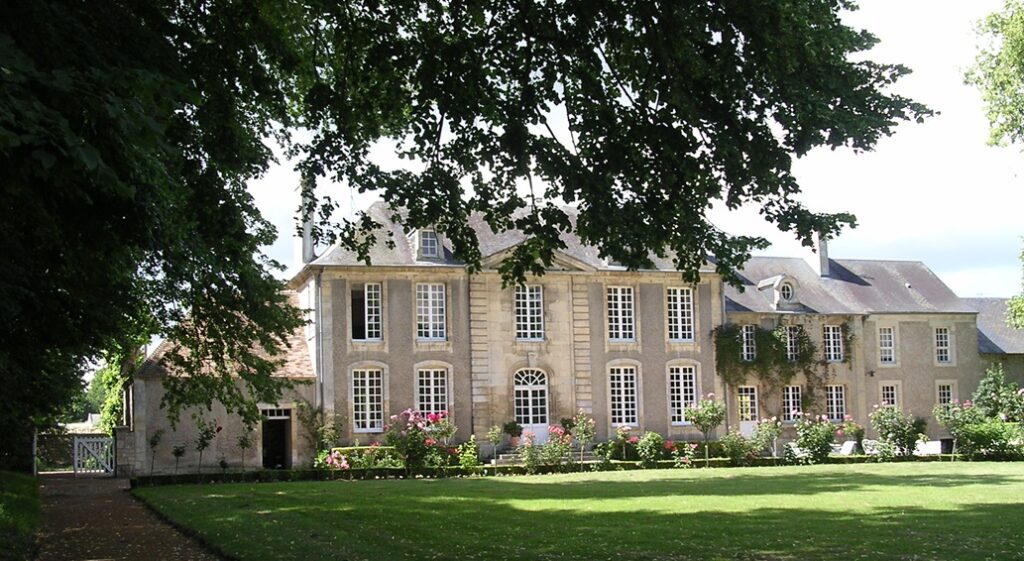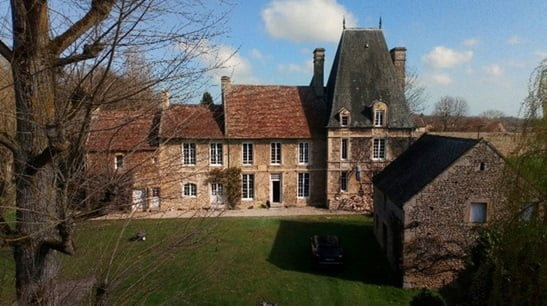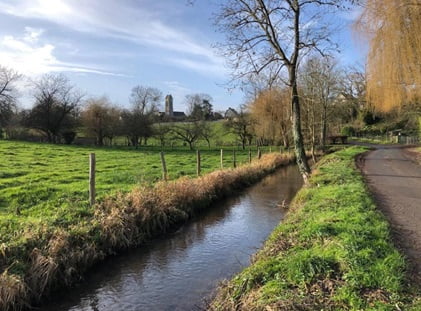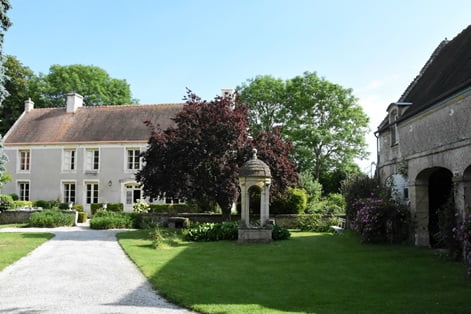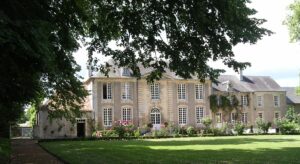 Balleroy manor 18th century
Balleroy manor 18th century
the rear facade overlooks a vast park sloping gently down the Dan valley
The oldest text mentioning ‘the great manor’ on ‘the King’s road’ dates back to the 16th century. A document certified in 1598 indeed mentioned that the property belonged to « Jacques Tabouret, husband of Anne of Balleroy and legal representative of Nicolas Balleroy, bearer of the 1401 fiefdom contract. » His son, Louis Tabouret, was probably the person who commissioned the first set of constructions and reworkings to modernize the domain under the reign of Louis XIII.
A date can be read on the wall of one of the servants’ quarters: 1758. It is the only temporal hint regarding the second wave of construction work that gave the building its neo-classical style. This ambitious project was ordered by Pierre LeCocq, lawyer at the bailiwick of Caen and main landowner in Biéville, who inherited this house in 1739.
The property was then sold in 1761 to Jean-Charles Longuet, a merchant from Caen who set up fabric and hat felt production inside the outbuildings in 1786. The people of Biéville grew weary of this facility, their anxiety supported by the Marquess of Livry of Bénouville who owned land in the valley. She called out to the Steward of Caen regarding this subject:
« The water of the Dan stream is to be poisoned by the felt wastes and all the substances used for fabric dyeing. It will be a permanent danger for livestock. » (Based on a quote by J.Morel in Biéville-Sur-Orne, ed. Louis Jouan, 1911, p. 25)
Jean-Charles Longuet also left his mark during his time thanks to his social attitude and his benevolence towards his employees. Perhaps he was the inspiration for his grandson who married Karl Marx’s daughter? The factory closed down in 1806, and Jean-Charles was forced to sell the property to Noël Lance, director of the Livry mine, whose family still owns the place.
In June 1944, the 15th-century cellar was used as a shelter for many families from downtown Biéville. The manor still bears the scars of the town’s liberation.
The property has been partially listed as a Historical Monument since 1989.

